1mg
Showing 7551–7600 of 7910 results
-
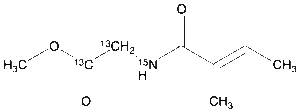
Tiglyl Glycine-13C2,15N Methyl Ester
$106.09 Add to cart View Product DetailsMolecular Formula : 13C2 C6 H13 15N O3
-
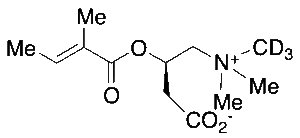
Tiglylcarnitine-d3
$224.25 Add to cart View Product DetailsMolecular Formula : C12H18D3NO4
-
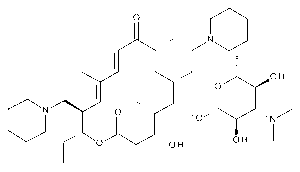
Tildipirosin
$85.39 Add to cart View Product DetailsMolecular Formula : C41 H71 N3 O8
-

Tildipirosin-d10 (90%)
$251.85 Add to cart View Product DetailsMolecular Formula : C41H61D10N3O8
-

Tilidine Hydrochloride
$220.80 Add to cart View Product DetailsMolecular Formula : C17 H23 N O2 . Cl H
-

Tilidine-d6 Hydrochloride
$340.69 Add to cart View Product DetailsMolecular Formula : C17 2H6 H17 N O2 . Cl H
-

Tilivalline
$228.56 Add to cart View Product DetailsMolecular Formula : C20H19N3O2
-

Tiludronic Acid-d5 Disodium Salt
$389.85 Add to cart View Product DetailsMolecular Formula : C7H2D5ClNa2O6P2S
-
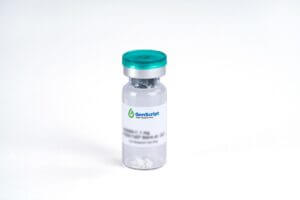
TIM-3 Fc Chimera, Human
$1,293.75 Add to cart View Product DetailsT cell Ig- and mucin-domain-containing molecules (TIMs) are a family of transmembrane proteins expressed by various immune cells. TIM-3 is an inhibitory molecule that is induced following T cell activation. TIM-3 is expressed by exhausted T cells in the settings of chronic infection and cancer, and tumor-infiltrating T cells that co-express PD-1 and TIM-3 exhibit the most severe exhausted phenotype. Tumor-infiltrating dendritic cells also express TIM-3. TIM-3 expression on DCs was found to suppress innate immunity by reducing the immunogenicity of nucleic acids released by dying tumor cells. Research studies show that heterodimerization of TIM-3 with CEACAM-1 is critical for the inhibitory function of TIM-3, and co-blockade of TIM-3 and CEACAM-1 enhanced antitumor responses in a mouse model of colorectal cancer. Its binding to Galectin-9 induces a range of immunosuppressive functions which enhance immune tolerance and inhibit anti-tumor immunity. TIM-3 ligation attenuates CD8+ and Th1 cell responses and promotes the activity of Treg and myeloid derived suppressor cells. In addition, dendritic cell-expressed TIM-3 dampens inflammation by enabling the phagocytosis of apoptotic cells and the cross-presentation of apoptotic cell antigens.
-
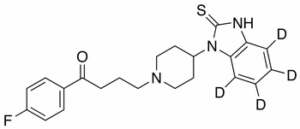
Timiperone-d4 (Major)(Contain d0)
$214.76 Add to cart View Product DetailsMolecular Formula : C22H20D4FN3OS
-
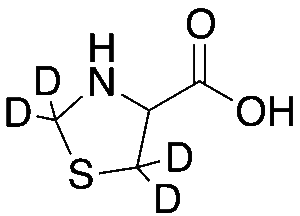
Timonacic-d4
$199.24 Add to cart View Product DetailsMolecular Formula : C4 D4 H3 N O2 S
-

Tinidazole-d5
$191.48 Add to cart View Product DetailsMolecular Formula : C8H8D5N3O4S
-

Tiotropium Bromide
$74.18 Add to cart View Product DetailsMolecular Formula : C19 H22 N O4 S2 . Br
-

Tiotropium-d3 Bromide
$116.44 Add to cart View Product DetailsMolecular Formula : C19 D3 H19 N O4 S2 . Br
-

Tiotropium-d6 Bromide
$220.80 Add to cart View Product DetailsMolecular Formula : C19H16D6BrNO4S2
-
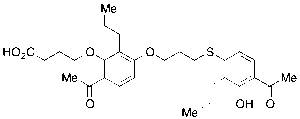
Tipelukast
$116.44 Add to cart View Product DetailsMolecular Formula : C29H38O7S
-
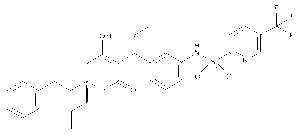
Tipranavir
$101.78 Add to cart View Product DetailsMolecular Formula : C31 H33 F3 N2 O5 S
-

TIQ-A
$56.93 Add to cart View Product DetailsMolecular Formula : C11 H7 N O S
-

Tizanidine-d4
$179.40 Add to cart View Product DetailsMolecular Formula : C9H4D4ClN5S
-
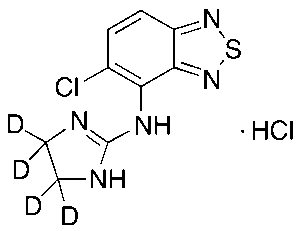
Tizanidine-d4 Hydrochloride
$145.76 Add to cart View Product DetailsMolecular Formula : C9H5D4Cl2N5S
-

Tizoxanide-d4
$185.44 Add to cart View Product DetailsMolecular Formula : C10H3D4N3O4S
-
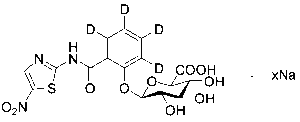
Tizoxanide-d4 Glucuronide Sodium Salt
$336.38 Add to cart View Product DetailsMolecular Formula : C16 D4 H10 N3 O10 S . Na
-
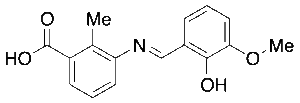
TLR2-IN-C29
$79.35 Add to cart View Product DetailsMolecular Formula : C13 H19 N O3 . H2 S O4
-
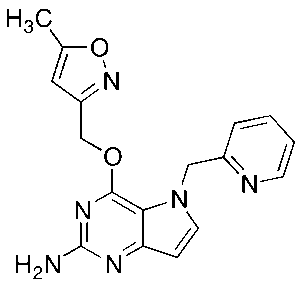
TLR7-agonist-1
$784.88 Add to cart View Product DetailsMolecular Formula : C17H16N6O2
-

TNF-α (80-235aa), Mouse
$1,323.94 Add to cart View Product DetailsTumor Necrosis Factor-Alpha (TNF-alpha) plays a major role in growth regulation, differentiation, inflammation, viral replication, tumorigenesis, and autoimmune disease. Besides inducing hemorrhagic necrosis of tumors, TNF has been found to be involved in tumorigenesis, tumor metastasis, viral replication, septic shock, fever, inflammation, and autoimmune diseasesuch as Crohn’s disease, rheumatoid arthritis and graft-versus-host disease. TNF alpha-1a is a potent lymphoid factor that exerts cytotoxic effects on a wide range of tumor cells and certain other target cells.
-

TNF-α, Bovine
$1,323.94 Add to cart View Product DetailsTumor Necrosis Factor-Alpha (TNF-α) plays a major role in regulating growth, differentiation, inflammation, viral replication, tumorigenesis, and autoimmune diseases. TNF alpha-1a is a potent lymphoid factor that exerts cytotoxic effects on a wide range of tumor cells. In addition to inducing hemorrhagic necrosis of tumors, studies indicate TNF is involved in tumor igenesis, tumor metastasis, viral replication, septic shock, fever, inflammation, Crohn’s disease, rheumatoid arthritis and graft-versus-host disease.
-

TNF-α, His, Human
$612.38 Add to cart View Product DetailsTumor Necrosis Factor-Alpha (TNF-alpha) plays a major role in growth regulation, differentiation, inflammation, viral replication, tumorigenesis, and autoimmune diseases. Besides inducing hemorrhagic necrosis of tumors, TNF has been found to be involved in tumorigenesis, tumor metastasis, viral replication, septic shock, fever, inflammation, and autoimmune diseases including Crohn’s disease, and rheumatoid arthritis as well as graft-versus-host disease. TNF alpha-1a is a potent lymphoid factor that exerts cytotoxic effects on a wide range of tumor cells and certain other target cells.
-

TNF-α, Human
$586.50 Add to cart View Product DetailsTumor Necrosis Factor-alpha (TNF-a) is a homotrimer with a subunit molecular mass of 17.3 kDa. Tumor Necrosis Factor-alpha(TNF-a) plays a major role in growth regulation, differentiation, inflammation, viral replication, tumorigenesis, and autoimmune diseases; and in viral, bacterial, fungal, and parasitic infections. Besides inducing hemorrhagic necrosis of tumors, TNF has been found to be involved in tumorigenesis, tumor metastasis, viral replication, septic shock, fever, inflammation, and autoimmune diseases including Crohn’s disease, and rheumatoid arthritis as well as graft-versus-host disease.
-

TNF-α, Human (P. pastoris-expressed)
$612.38 Add to cart View Product DetailsTumor Necrosis Factor-Alpha (TNF-alpha) plays a major role in growth regulation, differentiation, inflammation, viral replication, tumorigenesis, and autoimmune diseases. Besides inducing hemorrhagic necrosis of tumors, TNF has been found to be involved in tumorigenesis, tumor metastasis, viral replication, septic shock, fever, inflammation, and autoimmune diseases including Crohn’s disease, and rheumatoid arthritis as well as graft-versus-host disease. TNF alpha-1a is a potent lymphoid factor that exerts cytotoxic effects on a wide range of tumor cells and certain other target cells.
-

TNF-α, Mouse (P. pastoris-expressed)
$1,177.31 Add to cart View Product DetailsTumor necrosis factor alpha (TNF-α) is produced by neutrophils, activated lymphocytes, macrophages, NK cells, LAK cells, astrocytes endothelial cells, smooth muscle cells and some transformed cells. Mouse TNF-α occurs as a membrane-anchored form. The naturally-occurring form of TNF-α is glycosylated, but non-glycosylated recombinant TNF-α has comparable biological activity. The biologically active native form of TNF-α is reportedly a trimer. Human and mouse TNF-α show approximately 79% homology at the amino acid level and crossreactivity between the two species.
-
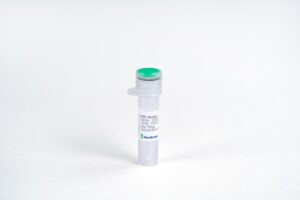
TNF-α, Porcine
$668.44 Add to cart View Product DetailsTumor Necrosis Factor-Alpha (TNF-alpha) plays a major role in growth regulation, differentiation, inflammation, viral replication, tumorigenesis, and autoimmune disease. Besides inducing hemorrhagic necrosis of tumors, TNF has been found to be involved in tumorigenesis, tumor metastasis, viral replication, septic shock, fever, inflammation, and autoimmune disease including Crohn’s disease, rheumatoid arthritis and graft-versus-host disease. TNF alpha-1a is a potent lymphoid factor that exerts cytotoxic effects on a wide range of tumor cells and certain other target cells.
-

TNF-α, Rat
$953.06 Add to cart View Product DetailsTumor Necrosis Factor-Alpha (TNF-alpha) plays a major role in growth regulation, differentiation, inflammation, viral replication, tumorigenesis, and autoimmune disease. Besides inducing hemorrhagic necrosis of tumors, TNF has been found to be involved in tumorigenesis, tumor metastasis, viral replication, septic shock, fever, inflammation, and autoimmune disease including Crohn’s disease, rheumatoid arthritis and graft-versus-host disease. TNF alpha-1a is a potent lymphoid factor that exerts cytotoxic effects on a wide range of tumor cells and certain other target cells.
-

TNF-β, Human
$1,323.94 Add to cart View Product DetailsTNF is secreted by macrophages, monocytes, neutrophils, T-cells, NK-cells following their stimulation by bacterial LPS. Cells expressing CD4 secrete TNF-alpha while CD8 cells secrete little or no TNF-alpha. The synthesis of TNF-alpha is induced by many different stimuli including interferons, IL2, GM-CSF. TNF-β is a potent mediator of inflammatory and immune responses. It belongs to the TNF family of ligands, and signals through TNFR1 and TNFR2. TNF-β is produced by activated T and B lymphocytes, and has similar activities to TNF-α. It mediates a large variety of inflammatory, immunostimulatory, and antiviral responses.
-
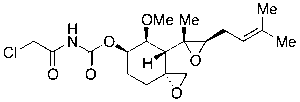
TNP-470
$220.80 Add to cart View Product DetailsMolecular Formula : C19H28ClNO6
-

Tobramycin Carbamate Acetate
$220.80 Add to cart View Product DetailsMolecular Formula : C19H38N6O10 xC2H4O2
-
Tobramycin Deuterated
$251.85 Add to cart View Product DetailsMolecular Formula : C18H37N5O9 for undeuterated
-

Tobramycin-D, 18O Acetic Acid Salt
$1,781.93 Add to cart View Product DetailsMolecular Formula : C18H36DN5O8¹⁸O . (xCH3COOH)
-

Tofacitinib impurity N
$61.24 Add to cart View Product DetailsMolecular Formula : C13H19N5
-
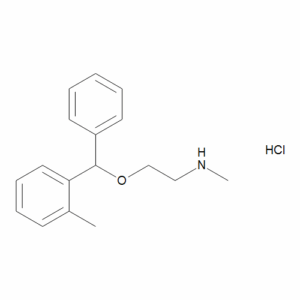
Tofenacin Hydrochloride Salt
$127.65 Add to cart View Product DetailsMolecular Formula : C17 H21 N O . Cl H
-
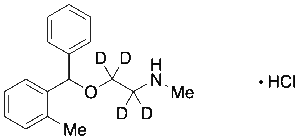
Tofenacin Hydrochloride Salt-d4
$182.85 Add to cart View Product DetailsMolecular Formula : C17H18D4ClNO
-
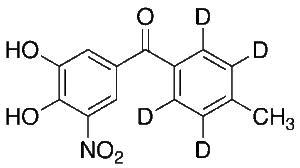
Tolcapone-d4
$206.14 Add to cart View Product DetailsMolecular Formula : C14H7D4NO5
-

Tolfenamic Acid-13C6
$133.69 Add to cart View Product DetailsMolecular Formula : 13C6 C8 H12 Cl N O2
-

Tolmetin Beta-D-Glucuronide
$153.53 Add to cart View Product DetailsMolecular Formula : C21 H23 N O9
-

Tolmetin-d3
$166.46 Add to cart View Product DetailsMolecular Formula : C15 D3 H12 N O3
-

Tolperisone-d10 Hydrochloride
$171.64 Add to cart View Product DetailsMolecular Formula : C16 2H10 H13 N O . Cl H
-
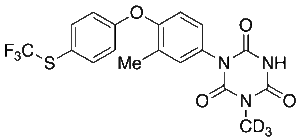
Toltrazuril-d3
$197.51 Add to cart View Product DetailsMolecular Formula : C18 2H3 H11 F3 N3 O4 S
-
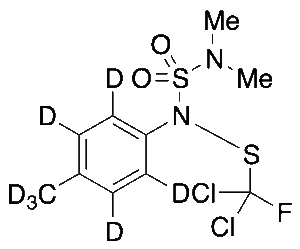
Tolylfluanide-d7 (Major)
$224.25 Add to cart View Product DetailsMolecular Formula : C10H6D7Cl2FN2O2S2
-

Tomatine (85%)
$94.01 Add to cart View Product DetailsMolecular Formula : C50 H83 N O21
-
Tonalide-d11
$166.46 Add to cart View Product DetailsMolecular Formula : C18 D11 H15 O
-
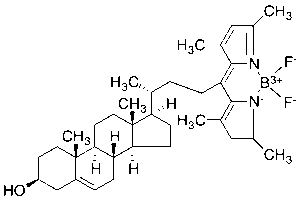
TopFluor Cholesterol
$112.99 Add to cart View Product DetailsMolecular Formula : C36H51BF2N2O






